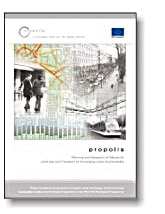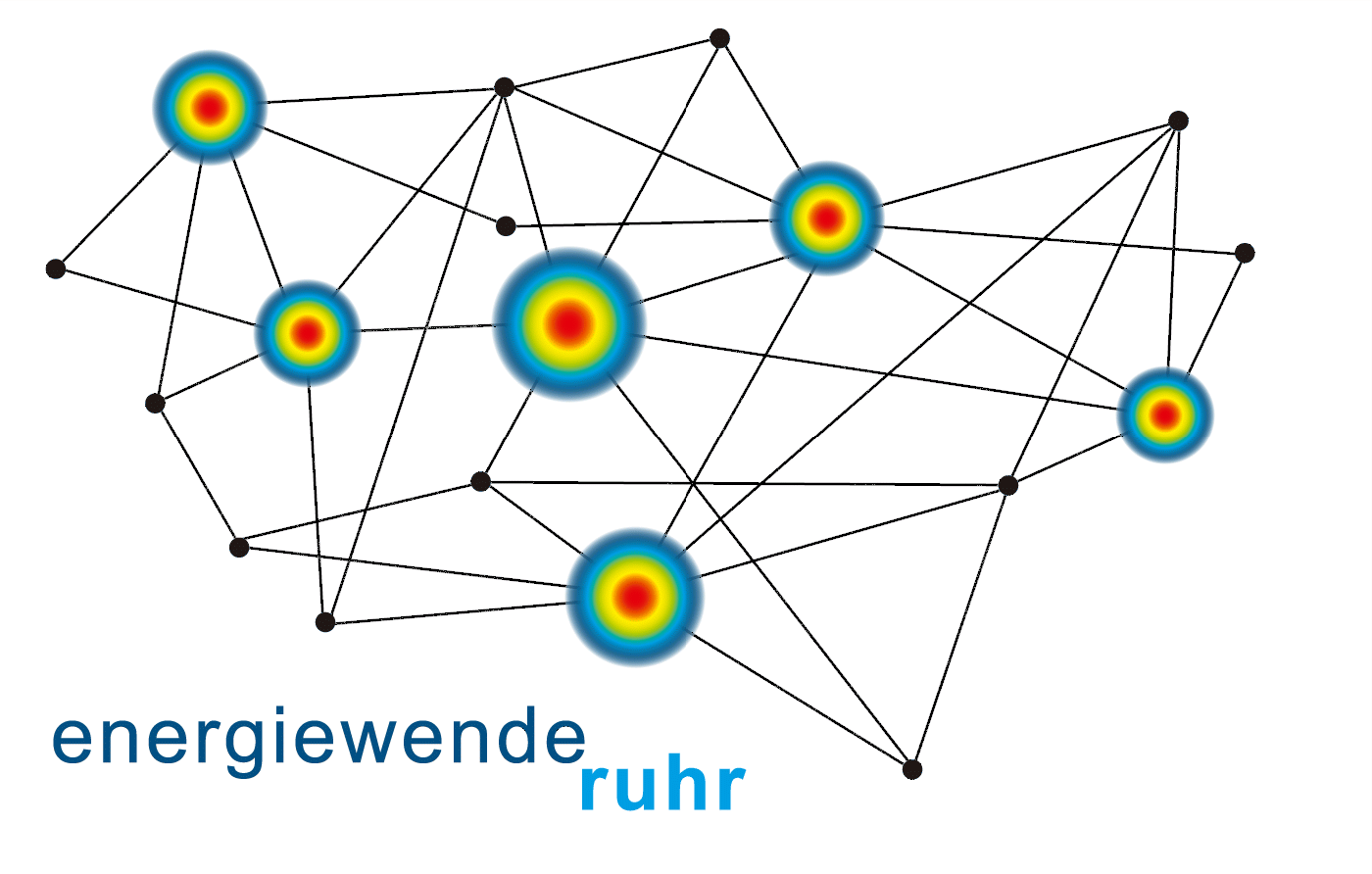Projects, chronologically:
Ruhr Area 2050: Modelling the Energy Transition in the Ruhr Area (2013-2016)ESPON BEST METROPOLISES: Paris, Berlin, Warsaw (2010-2012)
Future Scenarios of Mobility by Public Transport in Cologne (2009-2010)
HSTimpact: High-Speed Train Impact Study (2006-2008)
Spatial Impacts of Transport Infrastructure: Ex-post Analysis (2005-2009)
STEPS: Scenarios for the Transport System and Energy Supply (2004-2006)
Spatial Scenarios for the Eastern Ruhr Area (2004-2005)
PLUME: Planning and Urban Mobility in Europe (2003-2005)
ILUMASS: Integrated Land-Use Modelling and Transportation System Simulation (2001-2005)
PROPOLIS: Planning and Research of Policies for Land Use and Transport (2001-2004)
Disaggregation of Spatial Data for Transport Modelling (2001-2002)
Integrated Transport and Land-Use-Modelling in Selected Urban Areas (2001-2002)
GEMACA II: Group for European Metropolitan Areas Comparative Analysis (2001)
Ruhr Area 2050: Modelling the Energy Transition in the Ruhr Area (2013-2016)
This project was part of the Framework Programme for the Implementation of the Energy Transition in the Municipalities of the Ruhr Area of the Stiftung Mercator to enhance knowledge and awareness of the need for and the challenges of the energy transition in the municipalities of the Ruhr Area by surveys, basic research projects, citizen participation and implementation studies. In it the IRPUD model of urban land, transport and environment so far applied to the Dortmund urban region wwas extended to cover the whole Ruhr Area and to assess the impacts of land use, transport and other policies to reduce energy consumption and promote the transition to renewable energy on economy, mobility, quality of life and environment in the Ruhr Area until 2050. For this the model was extended by submodels of renewable energy and energy efficiency of buildings, electromobility and carsharing and was used to simulate scenarios that differ in their assumptions about future energy price increases and possible combinations of measures to reduce fossil energy consumption and to increase energy efficiency and renewable energy use to achieve the energy policy targets of the State of North-Rhine Westphalia. The project was a co-operation with the Institute of Urban Studies & Sustainable Infrastructure Planning, University of Wuppertal and the Wuppertal Institute for Climate, Environment and Energy. More information is available on the project page.
ESPON BEST METROPOLISES: Paris, Berlin, Warsaw (2010-2012)
![]() The objective of the ESPON project "Best Development Conditions in European Metropolises:
Paris, Berlin and Warsaw" (BEST METROPOLISES) is to identify factors that determine the development of
European metropolitan areas using Paris, Berlin and Warsaw as examples. The diagnosis is to provide data
and information to identify trends of metropolitan development as a basis for assessing policy
measures, incorporating sustainability into development strategies and implementing
these strategies in complex multi-level institutional contexts. The project addresses policies in
three thematic fields: (i) living condions and factors that influence the choice of residence,
(ii) mobility within the metropolitan region and between the metropolitan region and adjacent municipalities
and (iii) governance of metropolitan areas. The
Final Report of the project is available on the
ESPON website.
The objective of the ESPON project "Best Development Conditions in European Metropolises:
Paris, Berlin and Warsaw" (BEST METROPOLISES) is to identify factors that determine the development of
European metropolitan areas using Paris, Berlin and Warsaw as examples. The diagnosis is to provide data
and information to identify trends of metropolitan development as a basis for assessing policy
measures, incorporating sustainability into development strategies and implementing
these strategies in complex multi-level institutional contexts. The project addresses policies in
three thematic fields: (i) living condions and factors that influence the choice of residence,
(ii) mobility within the metropolitan region and between the metropolitan region and adjacent municipalities
and (iii) governance of metropolitan areas. The
Final Report of the project is available on the
ESPON website.
Future Scenarios of Mobility by Public Transport in Cologne (2009-2010)
In recent years the public transport authority of Cologne has experienced continued growth in public transport ridership. In peak hours some light-rail corridors are approaching their capacity limits. In co-operation with the Institute of Urban Studies and Sustainable Infrastructure Planning of the University of Wuppertal, the impacts of demographic development and of planning activities of the city of Cologne on the future development of public transport demand on the most frequented light-rail corridors were assessed.
HSTimpact: High-Speed Train Impact Study (2006-2008)
 HSTimpact was a research project in the framework of two INTEREG IIIB projects, HSTIntegration (HST4i)
and HSTconnect. The two projects investigated the development of the high-speed rail network in north-western
Europe by focusing on the strategic integration at the regional, national and European level and on the development
of the secondary network connecting with the high-speed rail network. The objective of the HSTimpact study was to
monitor spatial changes occurring at nodes of the high-speed rail network and examine whether they were caused by
the high-speed rail network. S&W were responsible for the Aachen case study. Project partners were Transport & Travel
Research Ltd., Nottingham, United Kingdom (Lead Partner), Buiten Consultancy, Utrecht, the Netherlands, the
Transportation Research Group at the University of Southampton, United Kingdom, and the Spatial Applications
Division of the Catholic University of Leuven, Belgium. Further information is contained in the
Executive Summary of the Final Report.
HSTimpact was a research project in the framework of two INTEREG IIIB projects, HSTIntegration (HST4i)
and HSTconnect. The two projects investigated the development of the high-speed rail network in north-western
Europe by focusing on the strategic integration at the regional, national and European level and on the development
of the secondary network connecting with the high-speed rail network. The objective of the HSTimpact study was to
monitor spatial changes occurring at nodes of the high-speed rail network and examine whether they were caused by
the high-speed rail network. S&W were responsible for the Aachen case study. Project partners were Transport & Travel
Research Ltd., Nottingham, United Kingdom (Lead Partner), Buiten Consultancy, Utrecht, the Netherlands, the
Transportation Research Group at the University of Southampton, United Kingdom, and the Spatial Applications
Division of the Catholic University of Leuven, Belgium. Further information is contained in the
Executive Summary of the Final Report.
Spatial Impacts of Transport Infrastructure: Ex-post Analysis (2005-2009)
![]() The objective of the project "Spatial Impacts of Transport Infrastructure: Ex-post Analysis" was to assess spatial
impacts of completed urban transport infrastructure projects, i.e. an ex-post analysis. In the project a GIS-based
methodology for the analysis of the imapcts of transport infrastructure projects was developed and applied
to six different German case study cities. The project was part of the Research Programme Urban Transport (FoPS)
of the Federal Ministry of Transport, Building and Urban Affairs (BMVBS) and is supervised by the Federal Office
for Building and Spatial Planning (BBR). The work was carried out in co-operation with
RRG Spatial Planning and Geoinformation,
Oldenburg i.H., Germany. The Final Report of the project (in German) was published in the
online publication series of the BMVBS.
The objective of the project "Spatial Impacts of Transport Infrastructure: Ex-post Analysis" was to assess spatial
impacts of completed urban transport infrastructure projects, i.e. an ex-post analysis. In the project a GIS-based
methodology for the analysis of the imapcts of transport infrastructure projects was developed and applied
to six different German case study cities. The project was part of the Research Programme Urban Transport (FoPS)
of the Federal Ministry of Transport, Building and Urban Affairs (BMVBS) and is supervised by the Federal Office
for Building and Spatial Planning (BBR). The work was carried out in co-operation with
RRG Spatial Planning and Geoinformation,
Oldenburg i.H., Germany. The Final Report of the project (in German) was published in the
online publication series of the BMVBS.
STEPS: Scenarios for the Transport System and Energy Supply (2004-2006)
 The aim of the project STEPs (Scenarios for the Transport System and Energy Supply and their
Potential Effects) was to develop, compare and assess possible scenarios for the transport system
and energy supply of the future taking into account the autonomy and security of energy supply, effects
on the environment, the economy and technological development and the impacts of measures to
internalise external costs and the interactions between transport and spatial development.
More information on the page STEPs.
The aim of the project STEPs (Scenarios for the Transport System and Energy Supply and their
Potential Effects) was to develop, compare and assess possible scenarios for the transport system
and energy supply of the future taking into account the autonomy and security of energy supply, effects
on the environment, the economy and technological development and the impacts of measures to
internalise external costs and the interactions between transport and spatial development.
More information on the page STEPs.
Spatial Scenarios for the Eastern Ruhr Area (2004-2005)
This project was to complement the project "Analysis of Central Constraints, Instruments and Goal Criteria for State Transport Planning in North-Rhine Westphalia" conducted by the Institut für Landes- und Stadtentwicklungsforschung und Bauwesen (ILS) for the Ministry for Transport, Energy and Regional Planning of the state of North-Rhine Westphalia by model-based calculations. In the project the IRPUD model of the development of land use and transport in the eastern Ruhr area was used to simulate the impacts of different policy scenarios on land use and transport development: which effects on travel behaviour and location decisions of firms and households are to be expected if not only car travel but also public transport would be made more expensive, and what would be the impacts of policies aimed at the concentration of land uses in central settlement cores. Other travel cost and transport infrastructure scenarios were simulated to widen the base for the comparative analysis. Finally, individual policies were combined to policy packages to identify possible interactions (synergies) between policies. The Final Report of the project can be downloaded.
PLUME: Planning and Urban Mobility in Europe (2002-2005)
 PLUME was a thematic network in the Key Action "City of Tomorrow" of the 5th RTD Framework Progamme
of the European Union. PLUME built on projects of the Land Use and Transport Research (LUTR) cluster and
other national and international projects on the integration of urban land use and transport planning. In addition
to synthesising the results from these projects, the key contribution of PLUME was to bring researchers
and users together with the aim of exploiting the results of the research quickly and efficiently in order
to assist in the sustainable development of cities throughout Europe. For more information see the page
PLUME.
PLUME was a thematic network in the Key Action "City of Tomorrow" of the 5th RTD Framework Progamme
of the European Union. PLUME built on projects of the Land Use and Transport Research (LUTR) cluster and
other national and international projects on the integration of urban land use and transport planning. In addition
to synthesising the results from these projects, the key contribution of PLUME was to bring researchers
and users together with the aim of exploiting the results of the research quickly and efficiently in order
to assist in the sustainable development of cities throughout Europe. For more information see the page
PLUME.
ILUMASS: Integrated Land-Use Modelling and Transportation System Simulation (2001-2007)
 In the project ILUMASS (Integrated Land Use Modelling and Transportation System Simulation) seven research
institutions in Germany developed an integrated, completely microscopic simulation model of land use, transport
and environmental impacts in urban regions. The model was calibrated with data of the urban region of
Dortmund in the eastern part of the Ruhr area and tested in experimental scenarios of land use and transport
development. The Final Report of ILUMASS (in German) gives an
overview on the progress achieved. More information on the page
ILUMASS.
In the project ILUMASS (Integrated Land Use Modelling and Transportation System Simulation) seven research
institutions in Germany developed an integrated, completely microscopic simulation model of land use, transport
and environmental impacts in urban regions. The model was calibrated with data of the urban region of
Dortmund in the eastern part of the Ruhr area and tested in experimental scenarios of land use and transport
development. The Final Report of ILUMASS (in German) gives an
overview on the progress achieved. More information on the page
ILUMASS.
PROPOLIS: Planning and Research of Policies for Land Use and Transport (2001-2004)
 The project PROPOLIS ("Planning and Research of Policies for Land Use and Transport for Increasing Urban
Sustainability") belonged to the Key Action "City of Tomorrow" of the 5th Framework Programme for Research and
Technology Development of the European Union. The objectives of the project were further development of theories
on the interaction between transport and spatial development, improvement of planning methods and simulation
and evaluation techniques and the identification of planning measures to improve the sustainability of urban regions
in Europe. For this, existing land use and transport models of seven urban regions in Europe (Bilbao, Brussels,
Dortmund, Helsinki, Naples, Swindon, Vicenza) were further developed and used to forecast and evaluate the
impacts of different policies on the sustainability of spatial development in urban regions. For more information
see the page PROPOLIS.
The project PROPOLIS ("Planning and Research of Policies for Land Use and Transport for Increasing Urban
Sustainability") belonged to the Key Action "City of Tomorrow" of the 5th Framework Programme for Research and
Technology Development of the European Union. The objectives of the project were further development of theories
on the interaction between transport and spatial development, improvement of planning methods and simulation
and evaluation techniques and the identification of planning measures to improve the sustainability of urban regions
in Europe. For this, existing land use and transport models of seven urban regions in Europe (Bilbao, Brussels,
Dortmund, Helsinki, Naples, Swindon, Vicenza) were further developed and used to forecast and evaluate the
impacts of different policies on the sustainability of spatial development in urban regions. For more information
see the page PROPOLIS.
Disaggregation of Spatial Data for Transport Modelling (2001-2002)
This project supported the work by the City of Dortmund for the city's new transport plan ('Masterplan Mobilität'). The task was to spatially disaggregate socio-economic data, in particular employment data available only at very aggregate level to the travel analysis zones (TAZ) of the transport model applied. For this a methodology was developed in which the data were first disaggregated to small raster cells using ancillary information such as land use maps and then aggregated to the TAZ.
Integrated Transport and Land-Use-Modelling in Selected Urban Areas (2001-2002)
The objective of this study was to analyse the feasibility of applying an integrated transport and land-use modelling approach to assess the long-term impact of different transport related policies using the urban regions of Bilbao and Helsinki as examples. The task of S&W was to integrate disaggregate environmental impact models into the modelling system. The project was carried out for the Institute for Prospective Technological Studies (IPTS), one of the seven scientific institutes of the European Commission's Joint Research Centre (JRC). The project was co-ordinated by Marcial Echenique y Compañía S.A., Bilbao, Spain, the second partner was LT Consultants, Helsinki, Finland. The two project reports (Part A Methodology and Part B Policy Scenarios) are available for download at the IPTS website.
GEMACA II: Group for European Metropolitan Areas Comparative Analysis (2001)
The INTERREG IIC project "The Competitiveness of the Leading European Metropolitan Areas" conducted by the Group for European Metropolitan Areas Comparative Analysis (GEMACA) aimed at generating comparable information and data on the economic development of the major metropolitan regions of north-west Europe over the past ten years and at identifying the conditions which favour the development of economic activities with strong potential for growth and the role policy can play to facilitate their growth. S&W together with the Institute of Spatial Planning of the University of Dortmund (IRPUD) calculated accessibility indicators for the fourteen study areas at the municipal level. The GEMACA II project was co-ordinated by the Institut d'aménagement et d'urbanisme de la région d'Ile de France (IAURIF), Paris.

